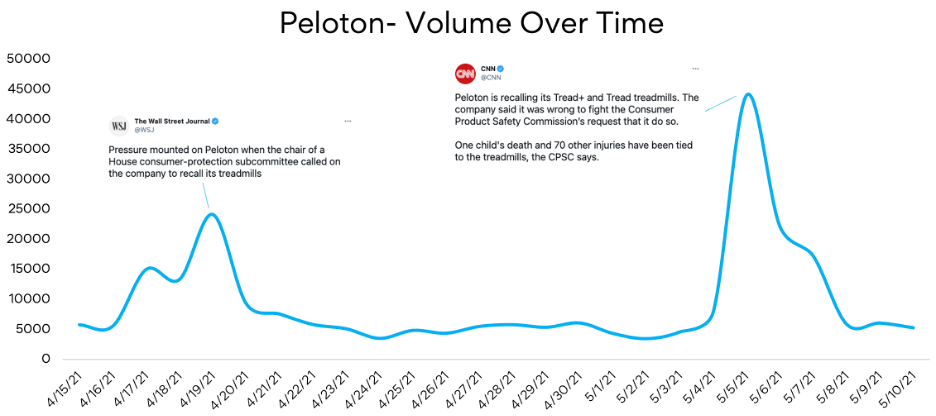On Wednesday (5/5), Peloton said it will recall its Tread+ and Tread treadmills after the Consumer Product Safety Commission shared that there has been one child death and at least 70 other injuries tied to the machines. Last month, the CPSC issued a warning about the dangers of the treadmill and urged customers with small children and pets to stop using the machine immediately. Peloton originally took the unusual step of refusing to recall the treadmills, with CEO John Foley later acknowledging that Peloton made a mistake in their initial response to the request for a recall.
“The decision to recall both products was the right thing to do for Peloton’s Members and their families. I want to be clear, Peloton made a mistake in our initial response to the Consumer Product Safety Commission’s request that we recall the Tread+. We should have engaged more productively with them from the outset. For that, I apologize. Today’s announcement reflects our recognition that, by working closely with the CPSC, we can increase safety awareness for our Members. We believe strongly in the future of at-home connected fitness and are committed to work with the CPSC to set new industry safety standards for treadmills. We have a desire and a responsibility to be an industry leader in product safety.”
The warning, refusal to recall, and subsequent backpedaling have kept the fitness equipment company in the headlines throughout the past month, garnering more than 354K social media engagements through coverage since the CPSC’s original warning on April 17th (source: BuzzSumo). Top national articles have mostly leaned negatively towards the brand since the news broke, with one of the most popular article coming from The Independent simply titled: “Is Peloton Safe?” During the same period, there were over 365K mentions of Peloton on social media, with 30% of those mentions being overtly negative in sentiment (source: Brandwatch).
THE POWER OF VIDEO
An important component of this story comes from one of the pieces of content that the CPSC released when issuing their original warning around Peloton products. Linked in the release is a home video showing an anonymous child being pulled under the Peloton Tread, unable to remove himself while the machine remained on. The video has received over 1.4 million views on the CPSC YouTube page and sparked much of the initial outrage that Peloton saw online.
Organizations must understand the potential impact that these kinds of videos can have on consumer perceptions. Most consumers won’t take the time to read long whitepapers about the potential dangers of a product, but watching a short video showing these dangers in action can have an immediate emotional impact and leave a lasting negative impression. CEO John Foley should have recognized this effect and considered it before dismissing the CPSC’s warnings. Peloton should also have been actively monitoring the online conversation, where they would have been able to quickly see the impact the video was having on their community and gauge the company response according to the emotional reactions online.
In these situations, even if you disagree with the agency, you can still come out right away and acknowledge the processes your company is taking to prevent these types of incidents from occurring. As we have emphasized in previous blogs, there is a vacuum of information that will be filled when a crisis occurs. Even if your organization does not have all of the answers in the moment, being able to lay out the steps you are taking to prevent future incidents can help mitigate growing backlash.
SPOKESPERSON AS A CATALYST FOR CHANGE
In a recent episode of the Peloton-themed podcast The Clip Out, the hosts compared this crisis to an earlier series of incidents Peloton faced leading to the National Music Publishers’ Association accusing the brand of using thousands of unlicensed songs and suing the brand for more than $300 million. Peloton has since partnered with Beyoncé, and hosts of The Clip Out foreshadowed that we might begin seeing a “Beyoncé of safety” in future Peloton marketing.
If we do see a “safety spokesperson” emerge from Peloton, that spokesperson must be actively used as a catalyst for change. It won’t be enough to have a familiar face touted in future advertisements, they will have to engage Peloton customers and proactively gather feedback from the safety community. This feedback and how Peloton uses it will be what drives the positive outcomes for the company.
Whether or not this comes to fruition, the fitness company has a long way to go in creating greatwill with its audiences. It appears the organization and its leadership have learned the hard way that being upfront about safety concerns is in many cases a better strategy than steering into the storm of potential backlash, but it will have to get creative in showing this rather than telling its customers that it cares about safety.


